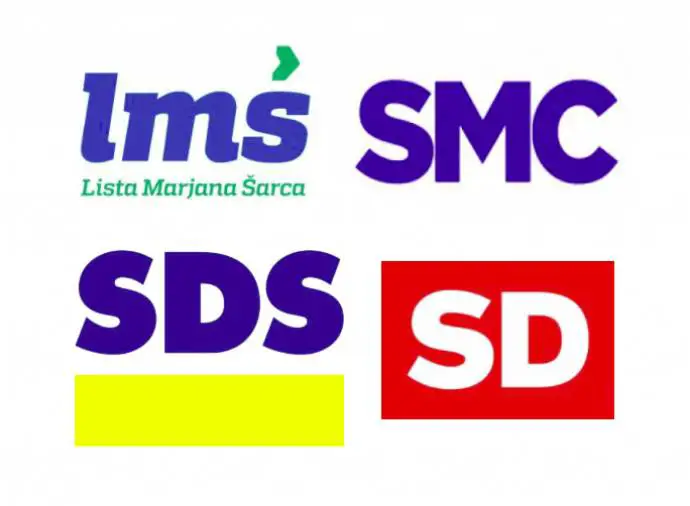STA, 26 April 2018 - The most comprehensive poll yet to be released ahead of the 3 June general election has put the Social Democrats (SD) on top ahead of the Democrats (SDS), the Marjan Šarec List (LMŠ) and the Modern Centre Party (SMC), but the pollster Valicon warned that the race is too close to call.
The latest poll conducted by Valicon as part of the Politikon survey projects for the SD to win 18% of the vote or 21 seats in the 90-member National Assembly, followed by the now opposition SDS on 17.1% or 19 seats.
The party of Kamnik Mayor Šarec is projected to win 11.5%, which would give it 13 seats and the party of outgoing PM Miro Cerar 10% or 11 seats, according to the results, which show distribution of support among the respondents who would turn out to vote.
The opposition Left is given 8.2%, New Slovenia (NSi) 7.2%, the coalition Pensioners' Party (DeSUS) 5.2% and the party of former Prime Minister Alenka Bratušek 3.5%.
Compared to two other polls conducted in the survey since the beginning of the year, the party of Kamnik mayor lost the most, going from 15.4% in January-February poll and 15.9% in March to 11.5% in April.
Despite the decline, Valicon estimates that the Šarec List still has enough to spare in order to make it to parliament. Based on the tracking poll, Valicon in fact projects that apart from the Šarec List all exiting parliamentary parties will make the 4% threshold to enter parliament.
"Alenka Bratušek Party is still below that threshold at the moment, however, considering the trend and the index of projected turnout, it may well cross it as early as May," the pollster said on Wednesday.
"If the ratios remain as they are, the winner will be decided by faithful and disciplined voters ... and tactical voters who swing in the final days from their genuine choice to another candidate for victory or for entry into parliament.
"The impact of TV debates and other forms of voter mobilisation, as well as release of public polling results will be much bigger than in 2014, and will be decisive in a similarly way as in 2008 and 2011," Valicon said referring to the last three general elections.
The parties that are less likely to make it to parliament, although they may spring a surprise, include the National Party (SNS), the United Left - Democratic Labour Party (ZL-DSD), Positive Slovenia (PS) of Ljubljana Mayor Zoran Janković and the People's Party (SLS).
Among these Valicon also lists the Pirate party, the List of Journalist Bojan Požar, the Greens, the United Right and the Good State of former SMC MP Bojan Dobovšek.
"These parties are rather far from the threshold at the moment, but not as much that they could not close the gap by means of an effective campaign, good TV appearances or even a clever PR stunt. All the mentioned parties have potential for such a breakthrough, but only one at the most will succeed."
The pollster added that the biggest obstacle for these parties would be selective media attention and the likelihood of their voters tactically voting for one of the parties from the top-tier group.
However, Valicon singled out Positive Slovenia as a special case in the second-tier group, projecting that if Zoran Janković was to stand as its top candidate the party would almost certainly cross the 4% threshold or win even a larger proportion of the vote.
The likelihood of other parties that have announced their bids to make it to parliament is minimal.
Conducted between 4 and 22 April, the latest poll includes answers from 2,187 respondents to the online panel Jazvem.si., the largest such panel in the country.
Three-quarters of the panel have been recruited based on probability sampling to offer results representative of the Slovenian online population in the ages between 18 and 75 years by gender, age, education and type of region.
The sample had also been selected by taking into account the divergence between the projections and the actual results of the general election in 2014 and the presidential election in 2017.
All our election coverage can be found here, while our profiles of the major parties are here.







